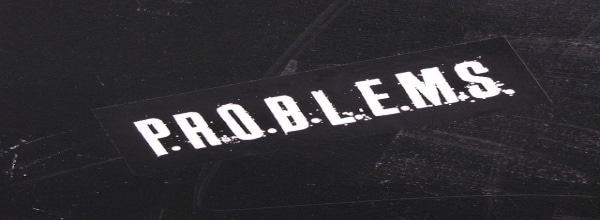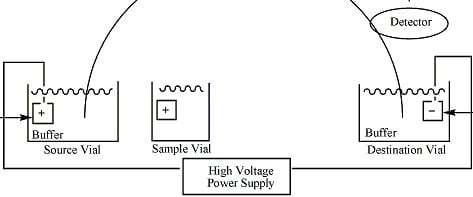The ELISA (enzyme-linked immunosorbent assay) is arguably one of the most important and versatile tools in the toolbox of molecular biologists, biochemists and diagnosticians across the world. Defined by its simplicity and speed, the assay is easy to learn and perform in as few as five steps. But with so few variables to manipulate, an experimental failure can quickly leave you a bit stranded and out of ideas as to where to go next. Here, we present you with some roadside assistance to get you back on the road to good ELISA results!
ELISA in a Nutshell
Whether you’re doing a direct ELISA, an indirect ELISA or a sandwich ELISA you will need to carry out a similar set of basis steps: coating, blocking, sample addition and detection. For an overview on these different types of ELISAs check out this article. Most ELISA experiments run within 3-4 hours, and when complete, a bright yellow or green color or a fluorescent signal (depending on the substrate you use) will appear in the wells containing positive samples. The intensity of the color is proportional to the amount of target antigen present in your sample.
Coating
In this step, the target antigen or a capture antibody is stuck to the surface of an ELISA plate. Failures in this step will result in a lack of signal in your assay and all wells will behave as blanks.
The average ELISA uses clear, 96-well plastic plates capable of holding around 300 µL in each well. Although these plates may look like any other 96-well plate, they have special names, so be observant when placing your order. The plates are oxidized creating a positive charge on their surface, and this is critical to the success of ELISA. So make sure that you don’t just grab some plates from your buddy’s tissue culture room!
To immobilize and dilute the target or capture molecule on the ELISA plate, a coating buffer is used. These buffers can vary in composition, but usually have a high pH of around 9. There’s a reason for this! This pH is above the isoelectric point of most biological molecules, and will thus render the molecules in your sample negatively charged. The immobilization step is as simple as adding your sample to the well in a liquid suspension of coating buffer.
Blocking
Not all of the plate’s charged surface will be occupied after the coating step. Similarly to western blotting, ELISA also calls for a blocking step. Adding a blocking buffer that contains ‘something’ to bind to those positively charged surfaces will prevent your detection molecule from doing so, which would result in a lot of false positives. This something is often a solution of bovine serum albumin (BSA). Obviously, if you’re trying to measure BSA, do not use it as a blocking reagent! That would result in a lot of false positives. If you DO need to measure BSA, you can block with 5% powered milk in TBS, or a 0.05% Tween-20 solution.
Sample
You can tailor your ELISA to suit your specific needs. The simplest format can determine the presence or absence of a target protein. In this situation, the only controls you need are a “blank” well where you don’t add sample and a positive control where you add a known amount of the target protein.
You can derive further information from the assay if you use the positive control to create a standard curve. You can do this by performing a serial dilution series starting with a known starting amount of your target protein. From these data, you can generate a sigmoidal curve (S-curve), which allows you to determine the concentration of an unknown based on the OD value of your sample. Although they are easier to generate, linear curves really don’t work well in ELISA. Luckily, most software integrated with plate readers will automatically calculate a 4- or 5-parameter S-curve from the standards you run. If you don’t have such software, check out elisaanalysis.com/app. This is a free program that is able to create an S-curve and calculate your unknowns based on you standard and unknown sample OD readings.
S-curves produce three regions – two “tail” regions on the extreme ends of the ‘S,’ and a linear region that connects them. Make sure that the sample dilutions allow your OD values to fall in this linear range. If your unknowns consistently yield OD readings outside of this range, you may want to try diluting them. Also, if your OD readings are consistently low, check your sample storage conditions. Repeated freeze-thawing can result in protein breakdown, and storing samples in a diluted form overnight can often result in instability.
Detection
Generally, an antibody conjugated to horseradish peroxidase (HRP) or a fluorescent marker is added at this point. These conjugates specifically bind to the target protein of interest, and in the presence of a substrate, they produce a visual color change or a fluorescent signal. Correct dilution of these conjugates is critical. If you obtain OD values above 3, the concentration of your conjugate is probably too high and you should dilute it further. Another good hint here is to check your “blank” well. If that value is significantly high, you may need to dilute your conjugate. Depending on the quality of your antibody-conjugate, you may need to dilute it as much as 1/250,000 to produce an OD reading that you can work with.
As with most things, understanding the ELISA at this level is not critical as long as it works well. But when the results start looking strange, or the entire system breaks down, understanding the “nuts and bolts” of the assay can go a long way in diagnosing and solving the problem.
Literature
Shah K, Maghsoudlou P. 2016. Enzyme-linked immunosorbent assay (ELISA): the basics. Br J Hosp Med (Lond). 77(7):C98-101.
Originally published in 2015. Updated and republished in May 2017.







